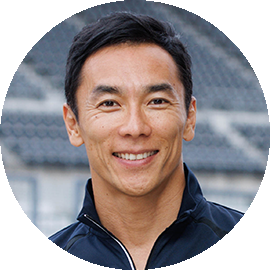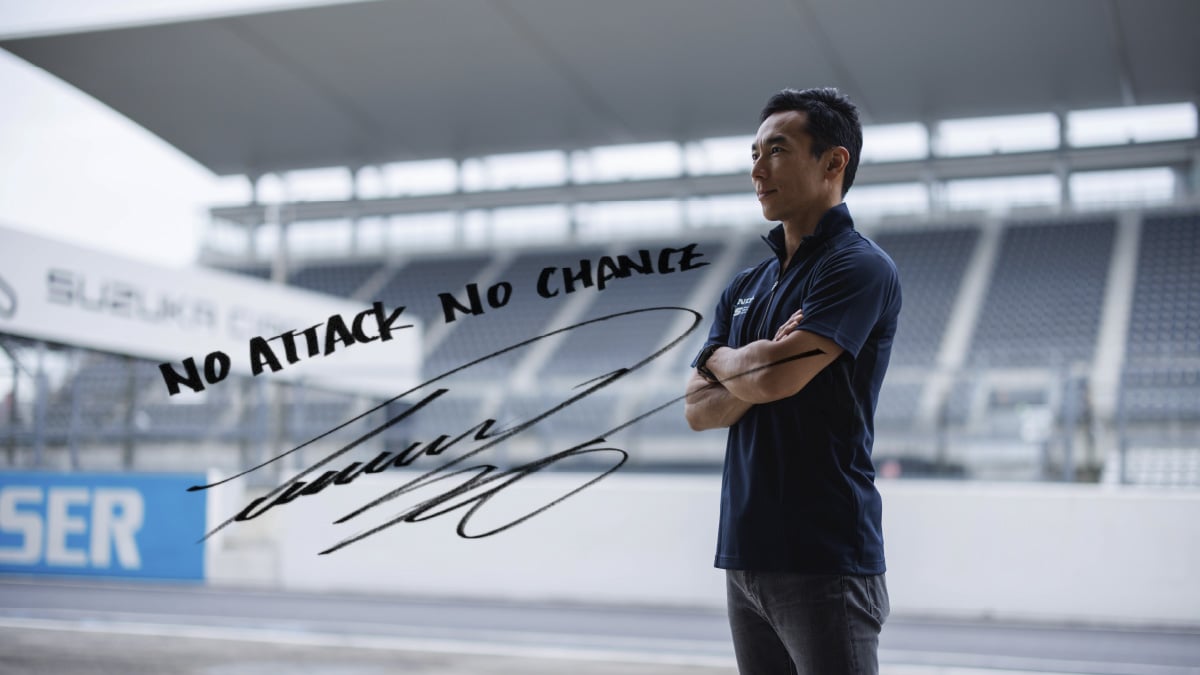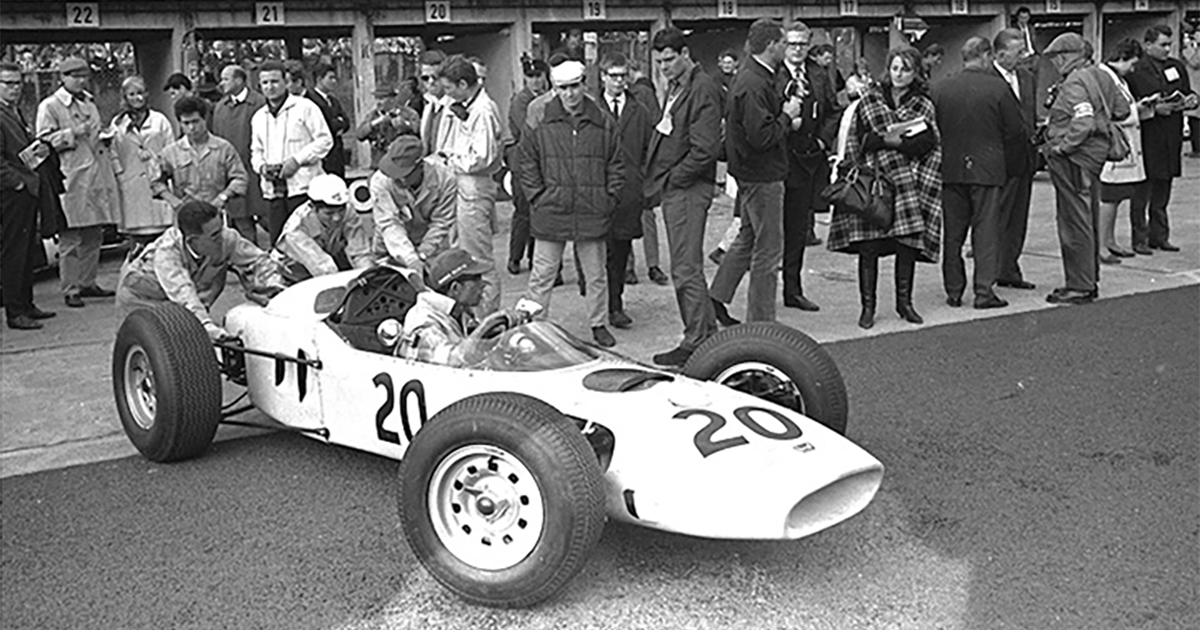In April 2023, Honda redefined "The Power of Dreams" for the first time in 23 years and announced a new tagline: "How we move you." Translated into Japanese, it means "to move you with the power of dreams." Racing drivers embody this tagline and give dreams and excitement to viewers.
Takuma Sato, who won the INDY500 twice in 2017 and 2020. We will be providing two interviews with Takuma, who is currently the principal of Honda Racing School Suzuka (HRS). In the first part, we spoke to Takuma, who has achieved many dreams, about what he thinks is the driving force behind his dreams.

Takuma Sato
Read More"Suzuka is everything about F1 to me". Passion for the Japanese Grand Prix
Takuma is a third-year student of the Suzuka Circuit Racing School Formula, and after graduating he has achieved results in top categories such as F1 and the IndyCar Series. Since 2019, he has been serving as the principal of Honda Racing School Suzuka (Suzuka Circuit Racing School at that time), which is responsible for the development of four-wheel drivers.
For Takuma, Suzuka is a special place that he has more attachment to than anyone else.
Takuma first encountered F1 at the 1987 Japanese Grand Prix. He was 10 years old at the time, set foot on Suzuka for the first time in his life with a ticket he had obtained from a Honda dealer.
At that time, he was still a car-loving kid who can be found everywhere. His parents were not well-versed in the world of racing, so they had never actually seen a race or visited a circuit. With little knowledge of F1, he sat down in a spectator seat near the final corner and says that the moment the car first passed in front of him, he was shocked by the tremendous roar and vibrations that reverberated throughout his body.

I was shocked that there was such a thing in the world. I was thrilled to hear only the exhaust note of the still-unseen machine roaring, from the stands at the final corner. As soon as the sound approached, a brightly colored F1 car suddenly appeared at the chicane. Immediately after that, the car accelerated furiously, shifting into fifth gear, and passed right in front of me. It was so fast that the sound and driver’s action were not synchronized. At that time, instead of the seamless transmissions that we have today, cars were driven manually (*), so every time the driver shifted up the gear, the acceleration would be interrupted, causing the driver's head to shake.
However, the acceleration was too fast, and the sound was delayed. I had never seen an object accelerate like that before, so I was surprised that I couldn’t help but stand up and I couldn't sit down during the race. It was a completely unknown experience, more like a shock than a thrill.
*The driver performs irregular operations manually. It was called the H-type
/H-pattern because the shift lever was moved back and forth and left and right.

After the race, that roar echoed in Takuma's head until he returned home to Tokyo. The excitement did not subside even after he went to school the next day, and the thought of "Was that real?" filled his mind, still feeling like a dream.

At that point, I didn't think I had the desire to become an F1 driver yet. It wasn't until much later that I recognized that most drivers receive sponsored education, and I didn't know that such a world existed. However, I do know that my eyes were glued to one driver that day at Suzuka. I was fascinated, and admired the way the yellow Lotus Honda driven by Ayrton Senna drove from 7th place in qualifying to 2nd place.
After that, as I watched Senna was becoming the F1 champion with Honda, I gradually started thinking, "I want to be able to drive that F1 car,'' and before I knew it, I started dreaming of becoming a racing driver.
However, Takuma was not in an environment where he could drive a kart on a circuit at that time. The most feasible and familiar race was a cycling competition. From then on, Takuma was totally absorbed in cycling, and it was six years later, at the age of sixteen, that he set foot in Suzuka again. In August 1993, Takuma competed in a cycling race held at the Suzuka Circuit, and as he pedaled, he felt the excitement of returning to the stage of his dreams as a player.

His competition bicycle had a "Powered by Honda" logo. He entrusted his longing for F1 to the Honda logo that he pasted on himself. The following year, he started his own cycling club at his high school and participated in the Inter-school athletics competition (inter-high school competition) for the first time, and he won the championship. He was able to reach the top.

I think something changed there. As a student, I was devoted to cycling, and in my second year at university, I came across a special feature on the Suzuka Circuit Racing School in an automobile magazine. This is it. That's how confident I was.
After that, he entered Suzuka Circuit Racing School as a third-year Formula student, received a scholarship, and moved to Europe in 1998. In 2002, he made his long-awaited debut in the F1 World Championship as a driver for Jordan Honda. In 2004, he won the third place at the American Grand Prix, the highest tie ever for a Japanese driver, and in 2017 he became the first Japanese to win the INDY500. In 2020, he won the INDY500 for the second time.
Enthusiasm attracts dreams. Ability to not be bound by common sense
Takuma became fascinated with F1 at the age of ten and has continued to draw on his dreams and turn them into reality. Where does the driving force come from?

I think it's enthusiasm (laughter). I really wanted to be. The age limit for Suzuka Circuit Racing School Formula is twenty years old. I was just under the age limit and had no racing experience. At the time, it was difficult to get into the school, as there were over ten times more applicants, and it was not yet an audition format.
I thought I wouldn't be able to pass the audition with just my resume, so I wrote an essay that wasn't in the application guidelines, and at the briefing session where I was told there would be a document screening, I directly negotiated on the spot to add an interview. I was already twenty years old then and it was the last chance, so I thought that the only way to win this seat was to convey my passion, "Why do I need this school? Because I need this opportunity'' And luckily there was someone who accepted it. I think that's why I'm able to stand here now.

Even if it may never come true, you will never get to where you want unless you believe in the possibility more than anyone else and take action. For Takuma, who considers himself a "have-not,'' he knew how important it was to act with enough enthusiasm to move people's hearts and change frameworks.

Most of my classmates have been racing karts since childhood, and some drivers, including the current champion of the highest class in the All Japan Karting Championship, have more than 10 years of racing experience even though they are still in their teens. Compared to those drivers, I'm just an ordinary person. However, I wanted to prove that it is not necessary to receive sponsored education. Even if I’m not in that situation, I should be able to seize the same opportunities if I do my best and work hard. So, I can say now that even I could come this far, and I have a hope that young people with more talent and from more privileged environments will be able to aim for even greater heights.
The meaning of continuing to be a driver. What I want to show my students
Takuma is currently in charge of training younger racers as a principal, but while he is also a coach, he has also been particular about continuing to compete on the world stage as an active racer. He says the reason is that there are things that he can convey because he is an active racer.

Due to my activities as a racer, there are some aspects where I am unable to fully pay attention to my students, but I am grateful I can solve this point because of understanding and support of my trusted instructors, staff, and everyone involved. Of course, I would have had the option of shifting to being a coach only once I became a principal. However, beyond what I have accomplished with Honda, I am now in this position as a coach. I believe that I can show what I can do as a racer.

Takuma became the first Japanese racer to win the INDY 500 during a tough 2017 season. In 2020, which experienced a global pandemic, he achieved his second win at the INDY 500. He continues to fight bravely although in a difficult situation.

I want the HRS students to feel what it means to compete on the world stage. I want to share not only the fact that I won the INDY500 twice, but also the joys, hardships, and pains that I have now. The students are currently preoccupied with their next step up to F4.
The stage of F1 and the world of IndyCar are still too far away to see. But beyond the junior category that they are currently aiming for, there is a world of top drivers. I want to continue to be both a driver and a coach for as long as possible so that they can feel all of that.
Expectations for Yuki Tsunoda. Attention to Honda's return to the Grand Prix
In the world of F1, where there are a lot of rivalries in the competition, it is natural that they will be chased by competitors. In such a situation, we would like to pay attention to Yuki Tsunoda, an HRS graduate who is competing in his third season in F1 with Scuderia AlphaTauri. For Takuma, what are the expectations for him?

Yuki was a graduate before I came to school as principal, so I have no experience of coaching him, but of course I knew from seeing and hearing that there was a guy who was extremely fast, and I paid attention to him. The first time I had direct contact with him was just before he was promoted to F1 driver. We talked about how to face life in the harsh world of F1. His growth over the past three years has been truly amazing. I think it's reliable to see him take advantage of opportunities. I'm looking forward to his driving at the Japanese GP.

Also, in May 2023, Honda announced that it would return to F1 in 2026.

I'm really happy to hear that. Just like the day I first visited Suzuka, for me Suzuka was not just part of F1, but Suzuka was all about F1. Similarly, Honda is not just part of F1, but F1 is Honda itself. Honda 's continued challenge is necessary to boost motorsports as a whole in Japan, and it is also a clear goal for young drivers.
When I was competing in British F3, it was broadcast on terrestrial TV as the main event, and magazines featured it every week in a four-page color spread. And tens of thousands of people gather. People come to watch the races not only because they want to know who the next generation of F1 drivers will be, but also because they think the races themselves are interesting. That kind of culture was established. F1 was first held in Silverstone, England in 1950. There is also such a historical background. Even in Japan, we grew up with the F1 boom, and the children of our generation are now making their racing debut and are taking a deep interest in motorsports. We must continue for the future. I think it would be great if that kind of culture spread.
The Japanese Grand Prix is about to begin with a lot of thoughts on it. Just like Takuma, who fell in love with motorsports after having an awesome experience at the Japanese Grand Prix venue in 1987, Suzuka in 2023 may light a fire in the hearts of "someone who will lead the next generation."
Original article issued on September 22, 2023
<Related Articles>










Suzuka is the origin of motorsports for me. I have always felt that Suzuka is not just part of F1, but that Suzuka is all about F1.